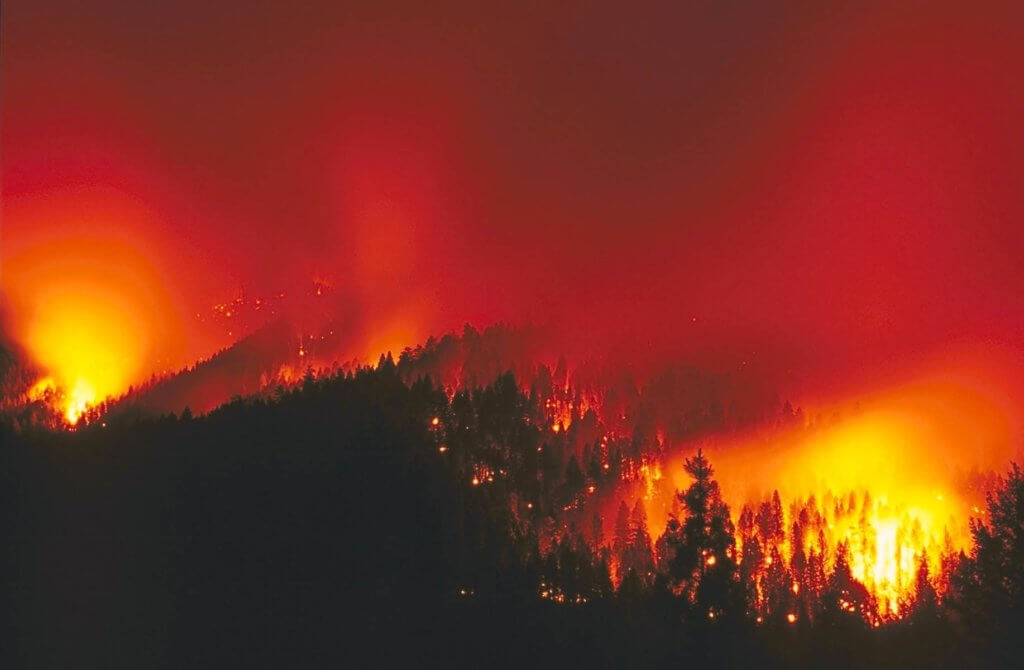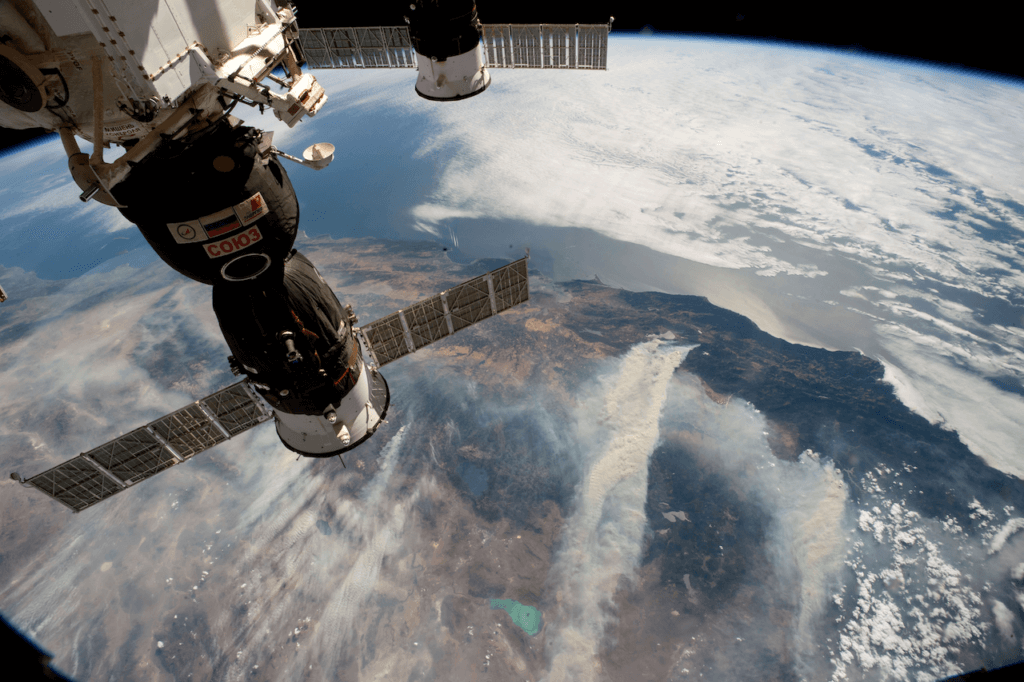
This is the first of a range of Issue Papers that the board of the International Association of Wildland Fire is preparing to develop an engaged discussion of the key issues facing our profession today. Future topics include Fire Suppression (June), Competing Resources (August) and International Cooperation (October).
Background
During the 21st Century wildfires globally are becoming increasingly deadly and destructive. It is not just an increase in the size of fires that is being observed, but a steep increase in impacts encompassing a high number of human fatalities, homes and structures destroyed by the thousands, and an upward trend in smoke exposure related to human health.
In recent decades, beginning in the late 1990s, we have seen an increase of difficult fire seasons — more frequently overall, and in landscapes and seasons where such difficult fires were rare. Signals of the impact of climate change on fires started in 1997, starting with more than a decade long drought in SE part of Victoria, and with significant peat fires in Indonesia that same year.
The United States started to experience frequent significant fire seasons starting in 2000 when large number of resources came from Canada, Mexico, Australia, and New Zealand. These large movements of resources have become a norm since 2000 as fire seasons have become more severe compared to previous decades.
By 2002, “mega–fires” became a norm in southern Australia. Unfortunate examples of recent very high impact events include Portugal (twice in 2017), California (in 2017 and 2018), and Greece in 2018. Swiss Re reports that 2017 was the costliest year on record for wildfire insured losses ($14B USD). Three of the top 20 costliest world insurance losses in 2017 were related to wildfire.
Why the Transition to Extreme Fires
This transition to extreme fires appears correlated with three primary trends.
- Climate change is often cited as a cause of this increase in wildfire activity. Increased temperature (and subsequently drier atmosphere) relates to a reduction of dead fuel moisture via the equilibrium moisture content. Warmer temperatures increase plant evapotranspiration and reduces soil water uptake, thus reducing live fuel moisture. While weather drives fire behavior, climate enables fire, particularly when regional climates experience more erratic phases — with longer periods of wet for fuel growth and dry for fuel flammability.
- Abundant vegetation is climate related, but for many places heavy fuel loads are also a function of past and current land management practices. Fire exclusion over long periods allows for increased fuel density, provides for a ladder of fuels, and during extreme environmental conditions enables extreme fire behavior. Yet with both climate change and land management practices in mind, “global area burned appears to have overall declined over past decades, and there is increasing evidence that there is less fire in the global landscape today than centuries ago” (Doerr and Santín, 2016).
- The rising trend in destructive fires has a third component in addition to climate and fuels – people are moving into fire and fire is coming to people. In many places, there is a shifting increase of population density into areas that are naturally fire prone – places where fire is known to have occurred for centuries and thousands of years. In other places, people are abandoning land that was managed and thus allowing it to go wild, with subsequent impact on fuels management. These locations are often referred to as a “wildland-urban interface” or a “rural-urban interface,” and “interface” is sometimes referred to as “intermix.” Areas where impacts of extreme fire may occur include: building next to or in a forested region; housing abutting grass and shrubland; communities near abandoned farmland; and firestorms entering deep into urban developments.
Based on this analysis of factors, it is suggested that there is not a single cause to today’s extreme, deadly and destructive wildfires, but rather a triangle of three factors – climate, fuels, and people. These are not mutually exclusive, though in fact all three are human–driven when considering a warming climate, fire exclusion, and population densities that not only live in fire prone areas but are the primary cause of ignitions.

(iss056e126709 – Aug. 4, 2018). Examples of extreme wildfires are seen in northern California and near the San Francisco Bay Area as the International Space Station orbited 252 miles above the United States.
A Dialogue on Extreme Fires
We propose a number of key questions related to climate, fuels, and people. One or more answers are provided, based on input from IAWF review of this issue and its related topics, but we recognize that there are varying viewpoints and perspectives.
We invite additional responses, and hope to engage ideas and insights as part of a broader discussion among the international wildfire community.
Key Questions for IAWF Membership
Climate
Q 1. What are the geographic climate trends that are potentially associated with changes in wildfire activity?
- Response: There are more frequent periods of unstable atmospheric conditions resulting in high winds, rapid fire growth, extreme fire behavior, and convective storms that provide lightning for ignitions.
- Response: There has been a significant decrease of winter rainfall in SE Australia which leads to earlier onset of fire seasons.
- Response: An increase of night-time warming temperature has been observed globally.
Q 2. What is being observed in terms of changes in the fire environment? In particular, how are weather and climate extremes being manifested in wildfire?
- Response: Fuels in many geographic locations are drier in relation to temperature warming, and thus more flammable.
Q 3. What can be said about the extent of 21st Century fire extremes compared to the 20th Century?
- Response: While extreme fires and seasons have occurred in the past, they now occur more frequently.
- Response: The frequency and severity of heat events has increased which has a major impact on population (heat–related deaths) and dryness (availability) of fuel.
Fuels
Q. 1. How are fuels different today than a century ago, and if different, what are the likely reasons?
- Response: In Australia, vegetation that grows back after large, severe fires has a different structure to the original vegetation. It becomes very grassy and shrubby with more open canopy which leads to quicker drying and also fires burn quicker to it. That is especially noticeable in wet forests.
- Response: In some regions there has been observed an increase in vegetation mortality related to hotter drought conditions.
Q 2. Given a changing climate and potential human health impacts (e.g., from smoke), what strategies can be employed to manage fuels?
- Response: Mechanical treatment will need to be explored, especially closer to communities.
- Response: The current debate about smoke impacts are based on comparing prescribed fire smoke with no smoke. As ‘no smoke’ is not a real option (we will have more wildland fires in the future), the debate needs to be shifted to find the right balance of treatments to minimise risks to life, health and other values from fires and also from prolonged smoke events.
People
Q 1. What are viable actions that can be undertaken to help mitigate against home loss and public safety?
- Response: The current design for expansion of cities and towns transfers the risk onto land and fire managers. The only proactive lever that land and fire managers have is land use planning. The changes to use of land should include a significant consideration of hazards that may impact on those new settlements/suburbs that happen due to population growth. Smarter design of those suburbs, ex-urbs, villages and related community growth need to incorporate green buffers such as golf courses and other sport fields, and agricultural and/or managed fuel breaks that will provide a better protection to developments than the current building of houses right against and within the vegetation.
- Response: Building standards and codes need to be improved to make houses more fire resistant, including potential inclusion of roof sprinkler systems.
Q 2. How does management communication to the public need to change to reflect the new paradigm of fire on the landscape?
- Response: The public needs to learn to live with fires in a similar way it accepted reality of other hazards such as floods, storm surges, tornadoes, hurricanes, etc. Our communication needs to reflect this and consider that the community is not homogenous, but a group that is diverse in education, social capital, age and racial/cultural background; therefore, in order to have impact, our communication activities and messaging need to consider these differences.
- Response: Currently we are constantly reporting on fires that we are successfully suppressing that do not cause any damage (which is around 98% in the United States). That has built community expectations that we could do the same for the remaining 2% if we can just get better, have more resources, have access to larger aircraft, etc. We need to educate the community and governments on how fires at the extreme end require not just more resources but vastly different resources, skills, and approaches to planning and education.
Regional extremes
Q 1. What is the regional extent of extreme fire and what are the primary driving and/or enabling factors?
- Response: The geographical extent of population expansion increases every year. More and more people are moving into areas that are fire prone. Most of these people have no experience living in such environments, which creates an increased risk.
Q 2. How do today’s extreme events compare to known historical fire?
- Response: They are more frequent, and because of housing and other values at risk and increased flammable vegetation, these extreme events require changes in suppression tactics and in strategic planning.
+ + +
References
Doerr SH, Santín C. 2016 Global trends in wildfire and its impacts: perceptions versus realities in a changing world. Phil. Trans. R. Soc. B 371: 20150345. http://dx.doi.org/10.1098/rstb.2015.0345
Background – Prior Policy Paper
“Reduce wildfire risks or pay more for fire disasters.” Policy Paper. International Association of Wildland Fire, Association for Fire Ecology, The Nature Conservancy.
Wildfire Magazine. Fall 2015. https://www.iawfonline.org/article/reduce-wildfire-risks-or-pay-more-for-fire-disasters/
Full Paper, April 16, 2015: https://fireecology.org/Reduce-Wildfire-Risks-or-Well-Pay-More-for-Fire-Disasters/
+ + +

What are your ideas on Extreme Fires?
Talk to us at the conferences and online.
At each of three Fire Behavior and Fuels conference sites we will include opportunities for you to share your thoughts on this and other issue papers.
In addition to opportunities at the conferences, you can contribute your response at any time via our IAWF Twitter and/or Facebook feeds.
Visit IAWFonline.org for more on the Issue Papers and submitting comments.
- twitter.com/IAWF
- facebook.com/IAWFire
- email: [email protected]

